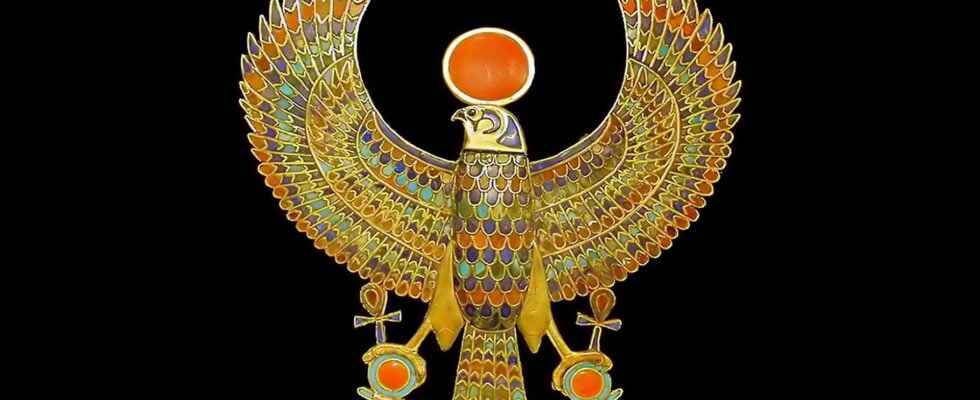Discovery almost intact by the Briton Howard carter, in 1922 in the Valley of the Kings, the pharaoh’s tomb Tutankhamun is broken down into four parts: the annex, the antechamber, the funeral chamber containing the vaults, the treasure chamber.
It took ten years to complete the excavations and list the 2,099 objects discovered in an exceptional state of conservation, of incredible richness and astonishing technicality. Furniture and jewelry are just a succession of masterpieces and refinement as evidenced by this pectoral (see presentation photo), clothing or body ornament, adorned with semi-precious stones, turquoise, carnelian, lapis lazuli and multicolored glass paste. Worn on the thorax, seat of the soul, it is supposed to ensure divine protection, in this case, here, that of the god Horus. The Falcon gate the solar disk and spreads its wings as a sign of sovereignty. In its claws, the attributes of the Egyptian gods: the Ankh cross, sign of life, and the Shen ring, sign of eternity.
Tutankhamun reigned at the end of the 14th centurye century BC, around -1335. He was only 9 years old when he became the eleventh pharaoh of the XVIIIe Egyptian dynasty, a period characterized byapogee of the art of ancient Egyptian civilization. He succeeds Akhenaton, his father, and his mother is said to be one of his father’s sisters. If this king did not really contribute to reform the country, politically or administratively, his short life leaves the most fascinating testimonies of the history of ancient Egypt as well as a dark legend which contributed to his notoriety: the “Pharaoh’s curse” would have befallen several members of the archaeological team after the exhumation of the mummy. It has since been shown that there was no relationship between the deaths of members of the expedition, which occurred from natural causes.
.
fs4
